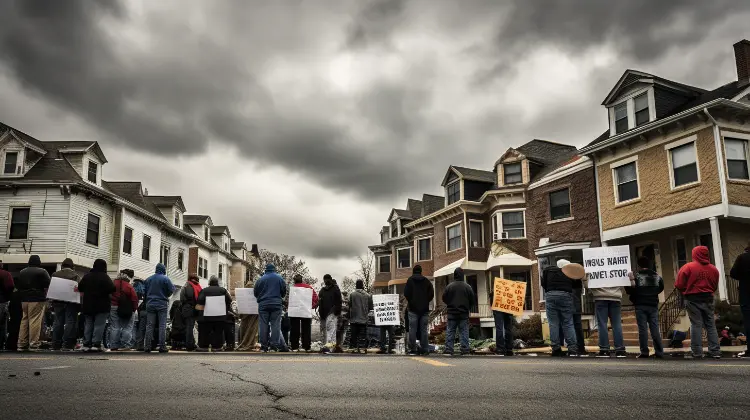The U.S. Treasury Department has acknowledged its part in the foreclosure crisis that has swept through the nation and reached Washington in 2009. Despite government efforts, the foreclosure wave continues to pose a significant challenge to homeowners across the country, including those in the nation's capital.

The Congressional Oversight Panel, responsible for overseeing the federal bailout programs, has expressed concerns about the sluggish pace of the Home Affordable Modification Program (HAMP). The panel's report suggests that HAMP's impact is limited, with projections indicating that it may only prevent one million foreclosures. This figure falls short of addressing the needs of the millions of other homeowners facing financial distress.
According to the Treasury Department, as of their latest report, 230,000 Americans have successfully obtained permanent mortgage modifications, a modest improvement in the grand scheme of things. However, the question remains: how long can those still waiting hold out?
The Treasury's self-critique highlights that 150,000 borrowers have either missed payments or have been rejected by banks, disqualifying them from the program. Countless others are in a state of uncertainty, with the threat of eviction looming over their heads.
Elizabeth Warren, then head of the Congressional Oversight Panel, criticized the Treasury for its delayed reaction to the crisis. She stated, "The tragedy is that their program simply will not reach the overwhelming majority of troubled households in time." In response, Treasury officials have admitted that HAMP was not designed to assist every struggling homeowner. Treasury Secretary Timothy Gainer commented, "It's still going to be a very painful process for the rest. We just need to work harder to catch as many as possible in the net."
In an effort to address the ongoing crisis, President Obama announced updates to HAMP, which included measures to encourage lenders to forgive debt for homeowners with underwater mortgages. This step was deemed necessary as 75% of the borrowers aided by HAMP were already in financial distress.
Washington, D.C., and its surrounding areas have not been immune to the foreclosure trend. The Capital Area Foreclosure Network has been established to coordinate efforts to support homeowners in trouble. This network brings together the Metropolitan Washington Council of Governments, the Non-Profit Roundtable of Greater Washington, and mortgage giants Fannie Mae and Freddie Mac. Their goal is to facilitate information sharing among non-profit organizations and banks and to foster a unified regional approach to the foreclosure issue.
An upcoming report from the Urban Institute is expected to reveal that nearly 3% of Washington mortgages were delinquent and had entered the foreclosure process by the end of 2009. However, there are indications that the situation may be stabilizing.
Peter Tatian of the Urban Institute notes, "The region still faces a sizeable challenge, and there are still a large number of troubled households behind with their payments." The need for effective and timely intervention remains critical.
For continued coverage and insights into the foreclosure landscape, visit ForeclosureConnections.com.
Interesting statistics and facts that are often overlooked in discussions about the foreclosure crisis include:
The foreclosure crisis remains a complex issue with far-reaching consequences, and while government programs like HAMP have provided some relief, the need for comprehensive solutions persists.

Hawaii and Illinois are full of Good Anti-Foreclosure Ideas ForeclosureConnections
Hawaii steps up efforts to counsel underwater borrowers, while Illinois is set to forestall banks while HAMP procedures are underway.
U.S. Treasury Secretary blasts Banks at Senate Hearing ForeclosureConnections
Treasury Secretary Timothy Geithner had more harsh words for uncooperative mortgagors as he briefed the Senate Appropriations Sub-Committee yesterday.
Are Fourteen of the Top 20 U.S. Metro’s shedding their Foreclosure Shackles? ForeclosureConnections
While the rest of America is still sinking in the foreclosure swamp, fourteen out of the twenty Top Metros post first quarter improvements over 2009.